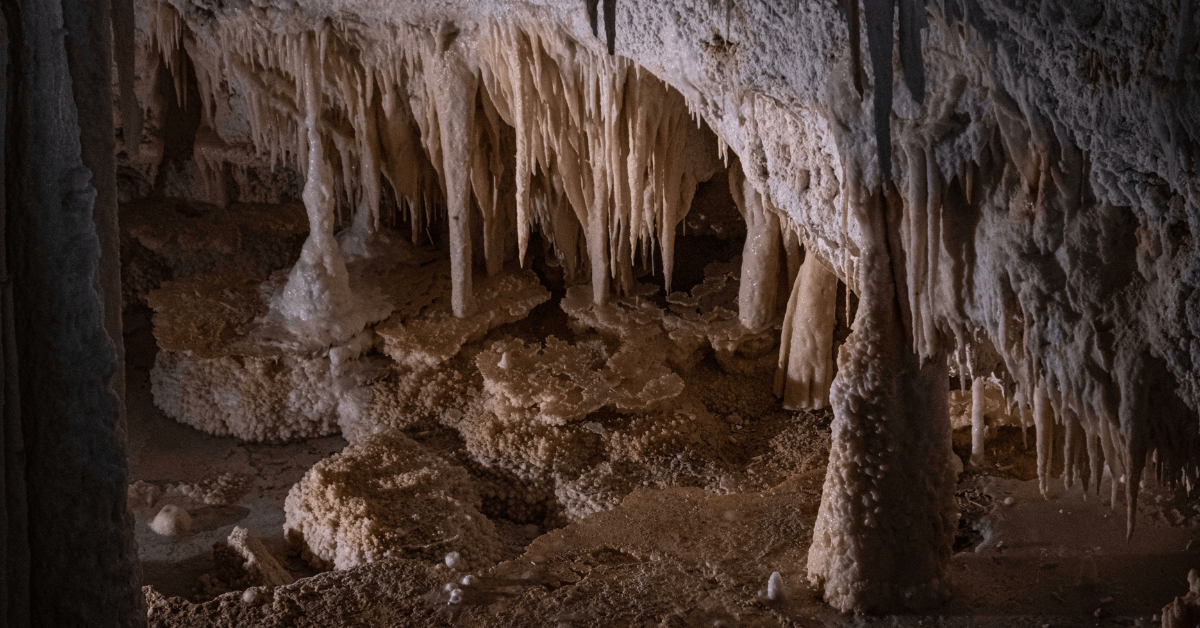As humans, we are naturally drawn to the mysteries and wonders of the Earth. We are constantly exploring and discovering new things, but there are some things that remain hidden deep beneath the surface. Sinkholes and caverns are two such natural phenomena that have captured our curiosity for centuries.
In this article, we will explore the similarities and differences between these two unique geological features and take a deep dive into the depths of the Earth.
So first things first;
The Earth is full of surprises, and some of the most fascinating can be found beneath our feet. Sinkholes and caverns are two natural wonders that have long been the subject of fascination and intrigue.
They are both geological features that form beneath the Earth’s surface, but they are quite different in their formation and appearance.
Sinkholes
Sinkholes are one of the most common geological features found on Earth. They are essentially depressions or holes that form on the Earth’s surface when the ground collapses into an underground cavity or void. Sinkholes can vary in size, from small depressions to massive craters that can swallow entire buildings.
Formation of Sinkholes
Sinkholes are formed in areas where the ground is made up of soluble rocks such as limestone, gypsum, or salt. These rocks are easily dissolved by groundwater, which can create underground cavities and voids. Over time, the weight of the ground above can cause the roof of the cavity to collapse, creating a sinkhole.
Sinkholes are not only fascinating but can also be dangerous, causing damage to property and even death. In 2013, a sinkhole in Florida swallowed an entire house, killing a man in his bed. Sinkholes can be caused by human activities such as mining, drilling, and construction, which alter the natural groundwater flow.
Types of Sinkholes
There are three main types of sinkholes: dissolution sinkholes, cover-subsidence sinkholes, and cover-collapse sinkholes. Dissolution sinkholes form slowly over time as the groundwater dissolves the rock beneath the surface. Cover-subsidence sinkholes occur when the ground slowly sinks into an underground void, while cover-collapse sinkholes form suddenly when the ground collapses into an underground cavity.
Cover-collapse sinkholes are the most dangerous and can cause sudden, catastrophic damage. These sinkholes can appear without warning, swallowing cars, buildings, and people. They can be up to hundreds of feet deep and can cause significant damage to the environment.
Caverns
Caverns, on the other hand, are underground caves or chambers that are formed by the slow dissolving of soluble rocks by groundwater. Unlike sinkholes, caverns are typically much larger and more complex. They can contain underground rivers, lakes, and even entire ecosystems.
Formation of Caverns
Caverns are formed over thousands or even millions of years as groundwater slowly dissolves the rock beneath the Earth’s surface. The resulting voids and chambers can be vast, with some caverns stretching for miles underground.
The beauty of caverns is unparalleled. Caverns are natural works of art, with stunning formations of stalactites, stalagmites, and other unique rock formations. Caverns have a magical and mystical feel to them, making them popular tourist attractions around the world.
Types of Caverns
There are several different types of caverns, including limestone caverns, lava tubes, and sea caves. Limestone caverns are the most common and are formed in areas where the ground is made up of soluble limestone rock. Lava tubes are formed by the cooling of lava flows, while sea caves are formed by the erosion of coastal cliffs by the sea.
Limestone caverns are the most fascinating type of caverns, and they are known for their unique beauty and geological significance. The formations found within these caverns are truly remarkable, and they can take on many different shapes and sizes.
Stalactites, which are formed by dripping water, hang from the ceiling of the cavern, while stalagmites, which are formed on the floor, grow upwards towards the ceiling. Other formations, such as helictites and soda straws, are also commonly found within limestone caverns, adding to their beauty and intrigue.
Similarities and Differences
While sinkholes and caverns are both geological features that form beneath the Earth’s surface, they are quite different in their appearance, formation, and significance. Sinkholes are depressions or holes that form on the Earth’s surface when the ground collapses into an underground cavity or void. Caverns, on the other hand, are underground caves or chambers that are formed by the slow dissolving of soluble rocks by groundwater.
Despite their differences, sinkholes and caverns are both important geological features that play a crucial role in shaping our planet’s landscape. They both offer us a glimpse into the hidden depths of the Earth and provide us with a unique opportunity to study and learn about our planet’s geological history.
Final Thoughts
Sinkholes and caverns are two geological wonders that have captured our curiosity and imagination for centuries. They are both unique in their appearance and formation, but they share a common bond as natural features that form beneath the Earth’s surface.
From the dangers of sinkholes to the beauty of caverns, these geological wonders remind us of the incredible power and beauty of nature.
Related: How Often Do Caves Collapse?
FAQs
- Are sinkholes dangerous?
Yes, sinkholes can be very dangerous, causing damage to property and even death.
- What causes sinkholes?
Sinkholes are caused by the collapse of the ground into an underground cavity or void, which is usually formed by the dissolution of soluble rocks by groundwater.
- Are caverns safe to explore?
Caverns can be safe to explore if proper precautions are taken. Visitors should always follow the guidelines and safety procedures set by the cavern management.
- Can you swim in caverns?
Swimming is usually not allowed in caverns, as it can damage the fragile ecosystem and formations within the cave.
- Where can I find sinkholes and caverns?
Sinkholes and caverns can be found all over the world. Some popular destinations for exploring sinkholes and caverns include Florida, Kentucky, and Mexico’s Yucatan Peninsula.
